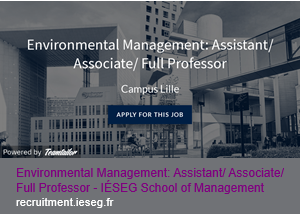My time as President of ISEE has gone by in a flash. I served for two years as President after serving for two as President-elect. This period has been significant in many respects, both globally and for ISEE. The 2012 United Nations World Summit for Sustainable Development held in Rio de Janeiro marked twenty years since the first such Summit was held in 1992. ISEE was scarcely present in 1992 (although I understand that Robert Costanza and Peter May were there). But ISEE was very much present in Rio in 2012.
Rio 2012
We held our Twelfth Biennial conference in Rio to dovetail with the Earth Summit, Rio+20. We knew that many significant environmentalists would be there, attending the official conference or the parallel global forum of NGOs. We, as a Board, thought this would provide a unique opportunity to promote a dialogue between ecological economists and policy makers for addressing market and institutional failures, designing innovative alternatives, and arriving at a better understanding of ecological and economic systems. Within the main conference theme: “Challenges and Contributions of a Green Economy”, we had four subthemes: greening the economy; the political economy of green development; environmental justice, ethics and values; and methodological challenges.
When Peter May and I, in consultation with the ISEE Board, seized the opportunity to organise ISEE 2012 in Rio, we little realised the kinds of challenges we might face, and especially the tasks ahead for the local organising committee headed by Peter. The shift in the dates of the Earth Summit meant that ISEE too had to shift its dates, rebook conference rooms, pursue keynote speakers for the new dates (losing some in the process but attracting others), and find accommodation for our participants in competition with those coming for the Earth Summit. Raising funds for developing country participants was also difficult due to the high costs involved, which few donors were willing to cover.
Despite the many challenges, however, as a team and thanks especially to the hardworking local committee, we managed to overcome the hurdles. ISEE had a strong showing in Rio, with some 800 registered participants from both developed and developing countries. Our keynotes were delivered by a range of distinguished speakers—academics, civil society practitioners, and policy makers—including Yolanda Kakabadse, Senator Cristobal Buarque, Sunita Narain, Nnimmo Bassey, Ignacy Sachs, Glenn-Marie Lange, Peter Victor and Nitin Desai, to name just a few. There was also a plenary panel on TEEB (The Economics of Ecosystems and Biodiversity initiative) organised by Pavan Sukhdev, and another for ISEE’s Kenneth E. Boulding prize winners—William Rees and Mathis Wackernagel—originators of the concept of the ecological footprint. In addition, at ISEE 2012 we reinstated the Presidential address and introduced a special plenary panel of past, current and incoming Presidents which could well become part of ISEE’s tradition for future conferences (https://www.youtube.com/watch?v=GGTnKYNvMS8). We ended the Conference on a high note with an inspiring speech by Jigmi Thinle, then Prime Minister of Bhutan (https://isecoeco.org/isee-2012-in-rio/).
As many ISEE board members commented later, they found the conference to be “vibrant”, “fun”, “very open and inclusive”, “closer to what ecological economics is”, “reaffirming the core of ecological economics, including issues of justice”, and having a “wonderful synergy”. Overall, the Board felt that it was “a very good idea to have held it at the same time as the Earth Summit, despite the competition”. Constructive suggestions included the need to find innovative ways of drawing more people to the poster sessions, and perhaps instituting an award for the best poster or set of posters in future conferences.
Our conference theme “Challenges and Contributions of a Green Economy” resonated with the thematic focus of the Earth Summit. It provided the opportunity for debate on what was and remains a controversial topic—the Green Economy. There is little consensus yet on what constitutes a green economy, or how we may build it, or the processes we must set in place to arrive at it. Some organisations, such as TEEB and UNEP, tend to give to the concept a broad interpretation, bringing into their definition of a green economy issues of social equity and improved human well-being. But many others see the concept as synonymous with green growth, and expect both its conceptualisation and its implementation to reproduce all the problems associated with economic growth itself.
Indeed, growth remains a contentious issue within ISEE. There are those who argue for de-growth as the only way of achieving sustainability on our planet. This view has many followers in Europe. Another argument, stemming originally from the United States—as formulated in 1973 by Herman Daly—is that we need a steady state economy rather than de-growth. Those from developing countries, however, see growth as a necessary if not sufficient condition for eliminating poverty. But here too, the emphasis is increasingly on a different type of growth which is more inclusive, equitable and environmentally sustainable.
Personally, I find it useful to differentiate between green growth and green development. The former is typically defined as economic growth based on a sustainable use of natural resources. The latter has at its centre the issue of equity, both within countries and across countries. As I argued in my Presidential address in Rio, we want a world that is pro-poor, pro-development and pro-environment. Such development would take into account not only the environmental costs of growth but also the costs of deepening inequalities, and the many facets beyond income that can impinge on the quality of our lives today and in the future.
Green Development, in my view, would thus be development that improves the quality of life not just of the average person but of the poorest person, while also conserving—even enlarging—our natural wealth. It would be multidimensional in scope. However, multidimensional development which ensures freedom from hunger and ill health, social and economic security, political voice to the disadvantaged, and—most of all—biologically diverse and resilient ecosystems, will need more than green growth. It will require us to make conscious choices regarding what we produce, how we produce it, and how we distribute it. We will need innovative technical and institutional solutions, founded on cooperation at many levels—from the local to the global.
The subject of the Green Economy can thus be an entry point into many debates and conversations, some of which are ongoing and others are yet to take place. ISEE provides a space to begin a conversation not just about the green economy or about growth, but about development itself. At the heart of these debates are also questions about planetary boundaries, material balances, energy sources, the ethics of consumption and lifestyles, and even what we mean by a good life. As Mahatma Gandhi said—“there is enough for everyone’s need but not for everyone’s greed”. Can we not live better on less?
Structural changes
In the recent past, ISEE has not only opened new conversations on the interface of ecology and the economy, it has also seen institutional changes within the organisation itself. One such change has been in the composition of ISEE’s board. We expanded the Board from five to seven elected members, in addition to the President, President-elect, past-President, and the ex-officio members. This expansion has enabled us to better involve Board members in ISEE’s functioning, including keeping regular minutes, enlarging our membership base, pursuing proposals for the next biennial conference, and so on. The new members have also brought in innovative ideas, such as sharing curricula on ecological economics on ISEE’s website. Anne Aitken, whom many know from her role as managing editor of ISEE’s journal Ecological Economics, also took over as executive director of ISEE in 2010. Anne has helped put ISEE’s accounts in order, worked hard to increase membership, updated our membership list, reorganised our website, and kept information on our constitution and by-laws on her fingertips. Her inputs have been of enormous help to me as President as I am sure they will be to future ISEE Presidents. Our journal, Ecological Economics, has also done very well, substantially increasing its impact factor and visibility in recent years, under Richard Howarth’s able leadership.
In addition, we now have a face-to-face Board meeting every year, dovetailing with the conference of a regional society (such as in Istanbul and Lille), rather than having such a meeting only every two years to coincide with our biennial conference. This has helped, I believe, maintain continuity in our interactions, take decisions more efficiently as a Board, and also get to know each other better. Moreover, the holding of Board meetings at the same time as a regional society conference provides opportunities for ISEE’s Board to build stronger links with our regional members, to develop partnerships, and to participate in debates that are taking place in different parts of the world. It thus helps us position ourselves more strongly as an international society.
What more can ISEE do?
Could ISEE play even more of a global leadership role than it has been doing? I believe it could, not only by providing the high quality scientific research that our members are already pursuing, but also by engaging more with the world of policy. For instance, we could contribute to the Millennium Development Goals and the Post-2015 Development Agenda which have now been defined in terms of environmental and developmental sustainability. We could also contribute to the next major round of Climate Change talks to be held in 2015 in Paris, through a planned presence of ISEE there, as also to the new intergovernmental platform for biodiversity and ecosystem services (IPBES).
Moreover, ISEE has a particular capability of bringing together ecological science and social science, which is also on the agenda of the recently established Future Earth Science Committee of which I am a member, and which has before it the challenging task of guiding research priorities for global sustainability over the next ten years. Perspectives of ecological economics can also inform the 2014 World Survey on the Role of Women in Development brought out by UN Women, of which the chosen theme this year is gender equality and sustainable development. Indeed, I do believe a gender perspective would greatly deepen and enrich both the science we do as ecological economists, and its policy impact.
In terms of our membership, similarly, we could broaden our geographic base further, to bring in a greater diversity of perspectives. Many regional societies are already vibrant and active, but some need infusion of new energy. Most of all, we need ISEE’s presence in regions where this is sparse, as in China, Russia and Central Asia. I am optimistic, though, that ISEE with the energy of its members and Board can achieve all of this and more in the years to come.
As this year draws to a close, I thank my fellow Board members for their support and contributions during my tenure, and wish them and our worldwide membership the very best for 2014. I hope we will move increasingly towards a world that respects our planet’s boundaries while promoting equality and human well-being — the themes of our next biennial conference, to be held in Iceland in 2014 under the leadership of ISEE’s incoming President Marina Fischer-Kowalski and our local host, Brynhildur Davíðsdóttir.
I very much look forward to seeing you in Iceland.
With warm good wishes for the New Year.
— Bina Agarwal
President ISEE (2012-2013), President-elect (2010-2011)
Professor of Development Economics and Environment
University of Manchester, UK


